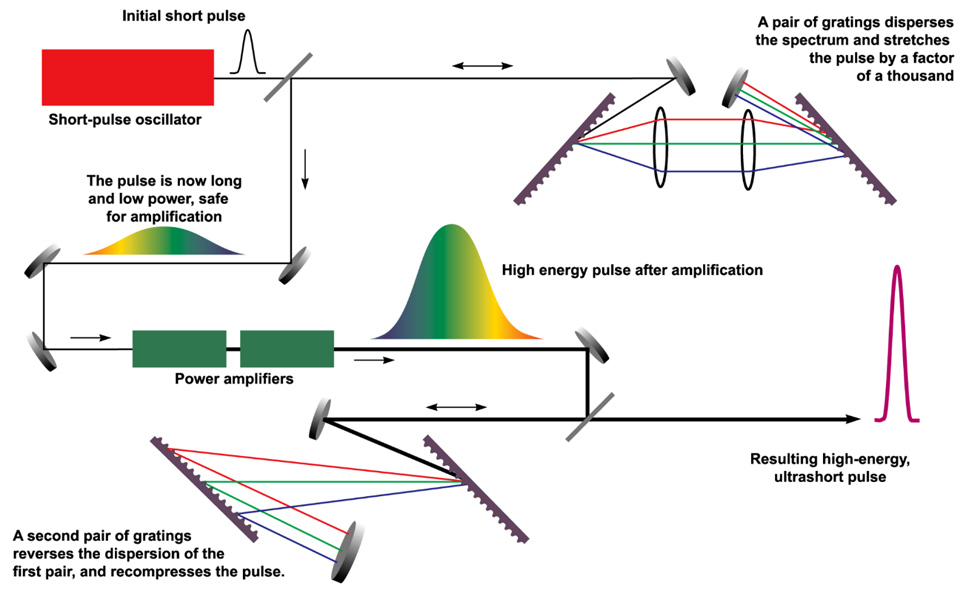
#Womeninscience: Donna Strickland, winner of the 2018 Nobel Prize in Physics
Katrina Wesencraft, University of Strathclyde
The Royal Academy of Sciences in Stockholm announced three winners of the 2018 Nobel Prize in Physics. Donna Strickland, a pioneering laser physicist, is only the third woman to win the prize in its 118-year history. Strickland shares one half of the prize with her PhD supervisor, Gérard Mourou, for their contribution to the development of ultrashort pulse lasers (the other half was awarded to Arthur Ashkin for the development of optical tweezers). The Nobel Committee recognised the pair for work published in 1985¹ while Strickland was a PhD student at the University of Rochester, New York.
The laser, first reported in 1960, can be considered one of the most significant technological inventions since the transistor². Lasers have a vast array of applications, and we encounter them daily in optical disk drives, printers, barcode scanners, and fibre optic communication (to name a few). They are also commonplace in scientific measurement devices. A laser beam is often described as continuous, coherent light that can be focused to a small spot; however, a laser can also be pulsed.
Strickland and Mourou’s method of generating ultrashort pulses led to a dramatic increase in laser peak power. Previously, pulsed lasers faced a major limitation: as the maximum intensity of the pulses reached gigaWatts/cm², nonlinear processes would occur and severely damage the laser components. In order to prevent these effects, laser systems had to be large (and therefore, expensive) and the peak laser power was limited. Mourou theorised that chirped pulse amplification (CPA), a technique originally used to amplify the available power in radar systems, would enable higher peak power and prevent nonlinear effects from occurring. The experiments were a success.
The technique Strickland developed uses gratings in the laser system to separate the original laser pulse into its individual wavelength components. As a result, due to the differing optical paths for the spectrally separated beams, a temporal separation takes place. The high-frequency component of ultrashort laser pulses lags behind the low-frequency component - causing the pulse to be ‘positively chirped’. The stretching of the pulses in time then reduces the intensity, making it possible to amplify the pulses in the laser cavity without damaging the optics in the system. For the output, the amplified pulses are recompressed to their original length³.

Now, facilities with the most powerful multi-stage CPA systems can generate pulses with peak powers measured in petaWatts - that’s a quadrillion Watts. In addition to the increase in power, the development of CPA for lasers has enabled the reduction of both the size and cost of pulsed laser systems. The development of these ultrashort pulse laser systems was initially driven by the desire to study strong-field atomic physics. The unprecedented high peak intensity of these lasers led to many discoveries about the fundamental properties of matter. However, these lasers also have a variety of industrial, medical, and commercial uses.
Aside from the high intensity of ultrashort pulse lasers, another advantage is that the target material has time to cool in between pulses. This led to the advent of laser surgery. Applying a continuous wave laser to biological tissue would cause necrosis, as cells overheat and die. Ultrashort pulsed lasers are ideal for biopsies and tumour removal as they ablate and cauterise simultaneously, without causing damage to surrounding soft tissue. Another common use of laser scalpels is in eye surgery, where they can reshape the cornea to correct vision problems.
The Nobel Prize in Physics is just one of many awards that Strickland has received. She received the Ontario Premier’s Research Excellence Award in 1999, and in 2000 she received the Cottrell Scholars’ Award from Research Corporation, recognising the quality of her research and dedication to teaching undergraduates. She became a Fellow of the Optical Society of America in 2008, and is currently the chair of the society’s Presidential Advisory Committee.
Banner credit: Photograph of Donna Strickland by Bengt Nyman used under Creative Commons Attribution 2.0 Generic license. Resized from the original
More #Womeninscience content
- #Womeninscience: Dr. Tiffany Schmidt
- #Womeninscience: Plugging the leaky pipeline, how can we retain more women in science?
- #Womeninscience: Dr. Keira Melican
- #Womeninscience: The decision of when to start a family
- #Womeninscience: Dr. Anja Godfrey
- #Womeninscience: Dr. Olga Skiteva
- #Womeninscience: The under-representation of women in science
- #Womeninscience: Professor Gail McConnell
- #Womeninscience: The work of Curt Rice in promoting equality and diversity
- #Womeninscience: Scientifica inspire students

)